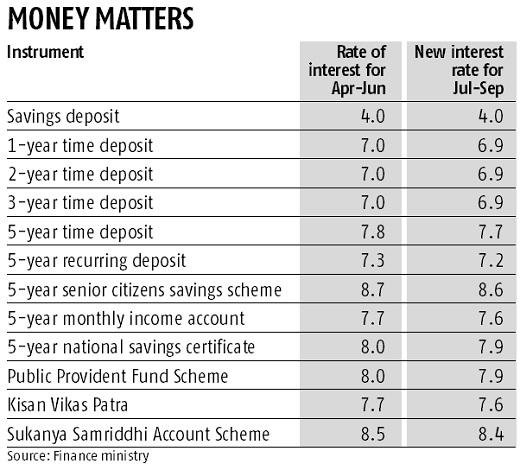Loan schemes don’t reach almost 60 per cent people in rural India, says a new survey which also finds climate change to be the biggest challenge for one in five farmers.
The survey, conducted by a rural media platform Gaon Connection, noted that the next generation in 48 per cent farming families does not want to pursue agriculture.
A farmer's story
At least 43.6 per cent farmers said they did not get the correct price for their produce, said the survey conducted among 18,000 rural respondents across 19 states, including Uttar Pradesh, Bihar, Madhya Pradesh, Maharashtra, Punjab, West Bengal and Telangana.
The survey -- released ahead of the Union Budget next week and exploring issues such as water scarcity and law and order -- found that a massive 59 per cent of farmers were unable to avail of any kind of loan, often because of lack of proper information.
Only 25 per cent and 15 per cent of the respondents said they took loans amounting up to Rs 50,000 and Rs 5 lakh, respectively.
“Thirteen per cent of the respondents said that high debt was their biggest challenge, and some 17 per cent said that high input cost -- the high prices of seeds, fertilisers, pesticides and other raw materials for their agriculture -- is their biggest problem,” it said.
As many as 62 per cent farmers said they wanted to decide the selling price of their produce instead of letting the government do the job, while 30 per cent were found to be satisfied with the status quo as far as pricing was concerned.
“There are no credible means and platforms for the central and state governments to know what’s on the mind of the rural citizen. Our surveys want to constantly find out, what does rural India want and what are its real priorities,” said Neelesh Misra, founder, Gaon Connection.
At least 19 per cent of the respondents surveyed recognised that climate change is happening and said sudden and unexpected weather changes are now the biggest challenge to their crops.
Millions of farmers across the country have to deal with sudden hailstorms, unseasonal rains, excessive heat and cold that affects agriculture and livelihoods, the survey said.
Water, irrigation and other issues
Every third woman living in Indian villages has to walk, on an average, half a kilometer to fetch water, it found.
Only eight per cent of villagers said they get piped water at home.
At least 61 per cent respondents said their households get water through public taps or hand pumps.
Improving access to irrigation alone will address many of their problems related to agriculture, said 41 per cent of the respondents. 20 per cent of the respondents said the soaring prices of diesel were a major concern.
The survey noted that most of those living in rural India now use the Internet for information dissemination.
“Thirty-eight per cent of them said they use the Internet for accessing social media platforms like Facebook and WhatsApp, 30 per cent said they use the Internet to get any kind of information and 15 per cent said they don’t have Android mobiles,” it added.
Stray cattle is a matter of big concern in the villages of Uttar Pradesh and other states. “Attacking herds of cattle have wounded, even killed farmers,” the survey said, referring to the destruction of crops.
When sick, 36 per cent rural Indians -- one in three -- go first to a private doctor while 44 per cent depend on nearby government hospitals for the treatment of their illnesses.
Discussing law and order, the survey said 35 per cent felt police is doing a good job but 26.1 per cent found police officers often misuse the power that they have.
People in rural India spends most of their earnings on family functions and only 10 per cent said they managed to save anything.
The Indian rural survey was carried out by a team of 175 surveyors.





